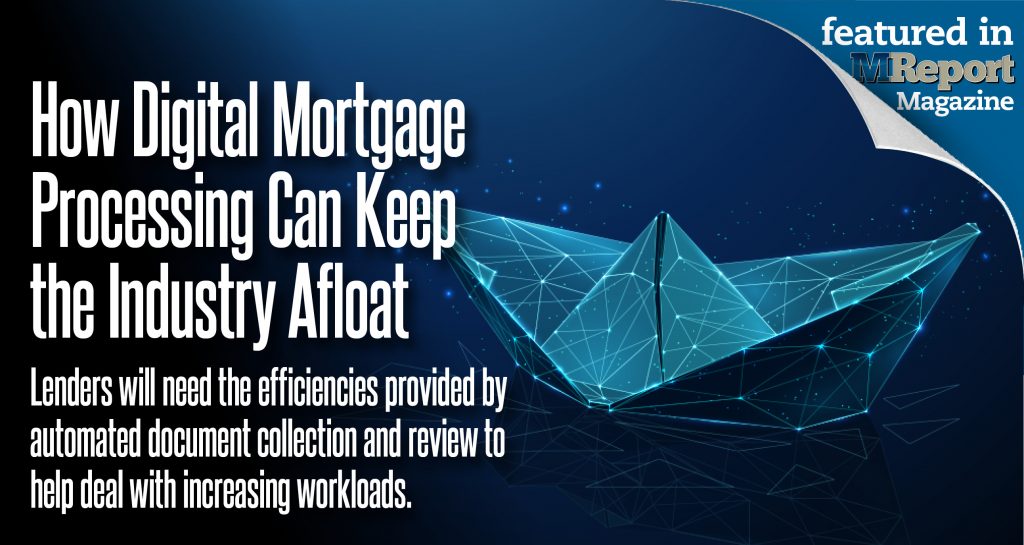
Editor's note: This article appears in the April 2021 issue of MReport, available here.
We’ve all been talking for months about the housing bubble we’re in. There has been a record number of home sales and refinances due to both unprecedented low interest rates and the ongoing movement of individuals and families leaving metropolitan areas for more affordable suburbs. At the same time, the global pandemic has taken a significant toll on millions of people who have either lost their job or had their income reduced.
While home sales have been soaring in many parts of the country, the number of homeowners behind on their mortgage has doubled since the beginning of the pandemic. According to the CFPB, 6% of mortgages were delinquent in December 2020, up from 3% in March 2020. Of these, 2.1 million borrowers were more than three months behind on payment, an increase of over 250% since March 2020. Combined, these households are estimated to owe almost $90 billion in deferred principal, interest, taxes, and insurance payments.
Additionally, one in five renters is behind on rent. As a result, both President Biden and the FHFA have extended moratoriums on single-family foreclosures and real estate-owned (REO) evictions through the end of June. The FHFA has also stated that people who have mortgages backed by Fannie Mae or Freddie Mac can apply for a three-month extension of COVID-19 forbearance. This means borrowers can potentially be in forbearance for up to 18 months.
While these actions can certainly help many homeowners and renters, there are legal challenges underway to determine whether these moratoriums are constitutional, and within the federal government’s power to enforce. Even if they do remain in place, there are restrictions, and not everyone who needs help will qualify. Still, others may find the terms and financial assistance not worth their time and may opt to bypass these options altogether. Furthermore, even with the extensions granted, June is just around the corner. Yes, the U.S. economy is gradually rebounding, but millions of Americans are still out of work and are struggling to make ends meet. It won’t be long before millions of homeowners, as well as renters, will be expected to resume their monthly housing payments, and may also find themselves owing a lot of money in back payments. Because of this, I unfortunately believe that we will soon begin to see a flood of foreclosures hit the market.
Preparing for the Flood
Nobody wants to see renters evicted or homeowners going into foreclosure. However, the truth is that property owners and banks can’t afford to keep granting deferrals and taking the hit on their bottom lines. At some point, they will stop being flexible. At the same time, banks want to work with people as much as they can and avoid taking measures that will erode their customers’ credit. Logically, when an individual’s credit is good, banks can offer them more services. Overall, more consumers having strong credit is good for the economy—and good for lending institutions. So, while banks and lenders are trying to preserve their financial positions, they also want to help their borrowers. In order to accomplish both goals, they are likely going to start enforcing stricter requirements for documentation and proof of hardship.
As those who are still affected by the pandemic attempt to qualify for refinancing into new loans with lower monthly payments or take cash out from their equity to make ends meet, they may not all be eligible. Lenders and processors will be flooded with paperwork as they try to accommodate customers’ needs for refinancing or other potential modifications should a refinance not be approvable. Imagine having to capture and review all of the required documents, identify what additional paperwork is needed, and communicate with and request information from thousands of individuals, their employers, creditors, and financial institutions.
The situation is reminiscent of the housing crisis of 2008-2012, when there were tremendous volumes of loan modifications and people were hiring attorneys and specially licensed mortgage loan originators (MLOs) to document and argue their hardships. The entire process often took months to complete, with significant back-and-forth between lenders, borrowers, and anyone they hired to represent them. This extensive back-and-forth further exacerbated the hardships people were already trying to avoid and/or relieve by working with their lenders. Similarly, with the tsunami that is coming, consumers and lenders can’t afford to have these processes take months. They need it to be handled properly the first time around. In essence, what the mortgage industry needs are greater efficiencies, more automation of the document collection and review process, and streamlined methods of communication between all parties involved.
Automated Digital Mortgage Processing Can Help
Efforts to streamline mortgage processing through technology already provide some relief from the burdensome amount of paperwork involved in the mortgage lending process. However, existing systems have gaps and limitations—and with the onslaught at our gates, loan originators, underwriters, and lenders will still need greater efficiencies through automated document collection and review. While Point of Sale (POS) systems require tax returns and bank statements as initial documentation for submitting to underwriting, they lack the intelligence and foresight to ask for the needed letters of explanation or supporting documentation. Additionally, Loan Origination Systems (LOS) have numerous integrations and can capture data from submitted documents and other sources, but they don’t automatically trigger the request for specific documents as needed or help get the items from all the parties involved.
Hand-in-hand with the document collection process is communication—another area where significant improvements can be made. Current systems focus on communicating with the lender and consumer only. But to streamline the process, it’s important to bring all parties involved into a single place where everyone can communicate, and to have a single point of truth for the transaction and documents involved. Any party in the process should be able to get immediate feedback without having to wait for overwhelmed originators, processors, and underwriters to review items (each of which has differing levels of experience).
Without automation to facilitate document gathering, intelligence to detect what’s missing, and a portal for centralized communication among all parties, one missing form or piece of data can stop the entire process. This creates added delays and frustration in an already cumbersome process. Ultimately, what’s needed is a system that focuses on the documents rather than the application, because the application is where most of the misinformation and inefficiencies start.
Below are three ways that technology can significantly streamline mortgage loan processing to help MLOs effectively meet the increasing demands for loan modifications, while also improving the customer experience.
- AutomationThrough Intelligence
The sheer volume of documents required to process a loan can number in the hundreds—and reviewing them all to make sure information is confirmed and consistent is a Herculean effort. In addition, current systems like LOSs, POSs, and AUSs (Automated Underwriting Systems) rely on a fair amount of self-reported data from borrowers—either through online applications or over the phone—that can create inaccuracies or result in conditions not being met, which stops the loan process from being completed.
With automated document collection and algorithms that enable intelligent data review, a digital mortgage processing system can trigger conditions and document needs based on the information at hand, and automatically invite appropriate collaborators at the right stage. It can also understand and address unique situations and combinations of borrowers, lenders, and loan program specific requirements. This leads to far less back-and-forth with underwriting, as well as a significant time savings. The result is the holy grail all originators strive for, especially in today’s COVID era: a "zero-touch" loan.
- Centralized Communication
In addition to tracking down documents and data, one of the greatest areas where MLOs spend their time is in communicating with the numerous individuals involved in the process—using age-old, highly inefficient methods such as phone calls, emails, and texts to ask for documents, answer questions (or find the answers for them), and keep all parties up-to-date. Intelligence can play a role here and save everyone significant time by automatically inviting the right parties into a centralized chat (think Slack, which has quickly gained in popularity for a reason), giving all parties who play a role a single location from which to efficiently exchange information, address issues as they come up, and improve response times.
- A Single, Unifying Platform
There are currently many disparate systems involved in the mortgage process: POSs, LOSs, and AUSs, among others. While each of these systems addresses a specific stage of the loan process, they only communicate with lenders and borrowers, leaving everyone else out—and each of these systems has gaps and limitations (as described above).
To solve for the gaps existing in these tools, a platform would work with the outputs to identify up-front what documents and information are needed for a particular borrower/lender/loan program combination. In addition to alerting parties about what documents are needed at each stage, the platform would also know from whom to request them and the status of those documents, keeping everyone in the loop. Most importantly, this type of platform would not replace the current systems that banks and brokerages have already invested in. Rather, it would easily work with them to improve the process and increase the value those systems deliver, offering a better overall experience for MLOs and borrowers.
Now Is the Time to Prepare
Given the flood of demand that’s just around the corner, banks, lenders, and processors need to be prepared and have the right tools in place before the demand curve shoots up. Waiting until activity increases will be too late. Evaluating and installing the right software and getting teams on-boarded and properly trained is critical in the near-term. The right tools and technology in place that automate and digitize all aspects of loan processing will facilitate fast, centralized communication helping everyone involved. Additionally, this type of digital mortgage processing will give financial institutions a powerful tool for working proactively rather than reactively with customers, which can ultimately help them preserve the bottom-line and contribute to a growing economy.

 theMReport.com Your trusted source for mortgage banking news
theMReport.com Your trusted source for mortgage banking news









